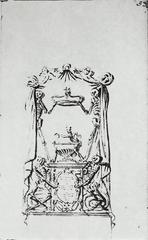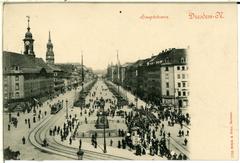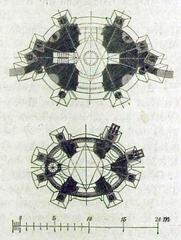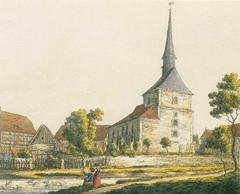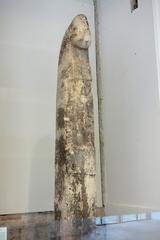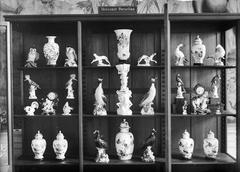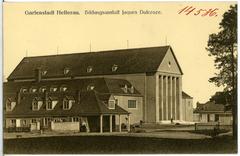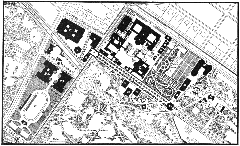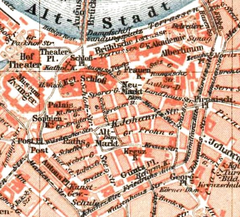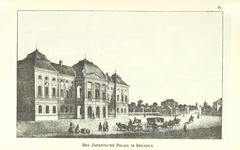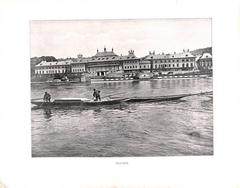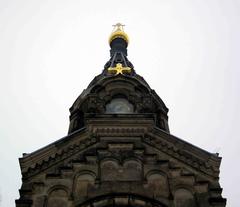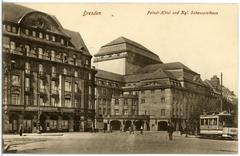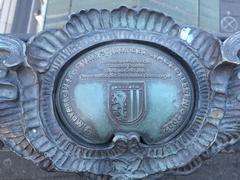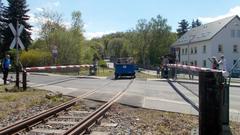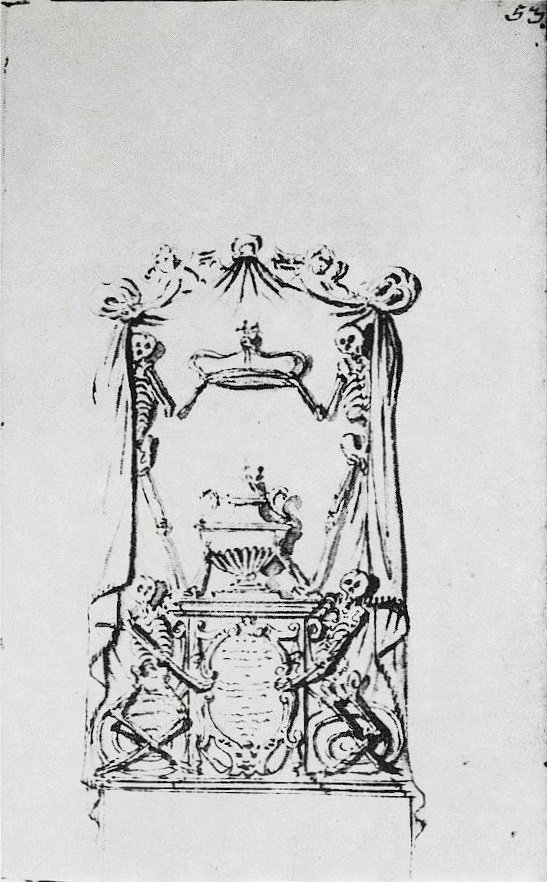
State Archives Dresden: Complete Guide to Visiting Hours, Tickets, and Historical Insights
Date: 14/06/2025
Introduction: The Significance of the State Archives Dresden
Nestled in the heart of Dresden, the State Archives Dresden (Hauptstaatsarchiv Dresden) is a monumental guardian of Saxony’s rich heritage. Founded in 1702 as the “Geheimes Königliches Archiv” (Secret Royal Archive), it has evolved into one of Germany’s most significant repositories, preserving over eleven centuries of political, social, economic, and cultural history (Wikipedia: Hauptstaatsarchiv Dresden; Sächsisches Staatsarchiv).
Far more than a collection of documents, the archive is a vibrant cultural site reflecting Dresden’s historical transformations—from its royal past to the upheavals of the 20th century and reunification. Its extensive holdings, modern facilities, and embrace of digital technologies make it indispensable for understanding Saxony’s evolution and German history at large (EHRI Project).
Table of Contents
- History and Development of the State Archives Dresden
- Architectural Highlights and Location
- Collections and Research Opportunities
- Visiting Information: Hours, Tickets, and Accessibility
- Nearby Attractions and Cultural Context
- Digital Resources and Online Access
- Frequently Asked Questions (FAQ)
- Practical Visitor Tips
- Summary and Visitor Recommendations
- References and Further Reading
History and Development of the State Archives Dresden
Origins and Institutional Growth
The State Archives Dresden originated in 1702 to safeguard Saxon court and governmental documents. In 1834, a royal decree unified several archives, creating the Hauptstaatsarchiv des Königreichs Sachsen. The 19th century saw exponential growth, especially with the addition of the Finance Archive in 1873 (Wikipedia: Hauptstaatsarchiv Dresden; Wikipedia: Sächsisches Staatsarchiv).
Throughout the 20th century, the archive adapted to Saxony’s shifting administrative landscape. After World War II, it became the Landeshauptarchiv Dresden under the GDR, later merging with other state archives post-reunification. Today, it stands as the largest department within the unified Sächsisches Staatsarchiv.
Architectural Highlights and Location
The Archive’s Physical Presence
Originally housed in a repurposed theater, the archive moved in the early 20th century to a dedicated ensemble in Dresden’s Regierungsviertel (government district), marked by interconnected buildings and underground tunnels—an architectural testament to early archive design (Wikipedia: Hauptstaatsarchiv Dresden).
Miraculously, these buildings survived the devastating 1945 bombing with minimal damage. Heritage protection measures in the 2000s and the addition of a modern storage building between 2006 and 2008 ensure the archive’s continued growth and preservation.
Address: Archivstraße 14, 01097 Dresden
Public Transport: Tram lines 7 and 8 (Heeresbäckerei), bus line 64 (Stauffenbergallee), S-Bahn (Industriegelände) (Stadtarchiv Dresden).
Collections and Research Opportunities
Scope and Holdings
The Hauptstaatsarchiv Dresden is the largest state archive in Saxony, housing:
- Over 47,000 linear meters of records
- Approximately 53,000 historical documents and charters
- Around 360,000 maps, plans, and architectural drawings
- A library of about 75,000 media units
- Extensive photographic, audiovisual, and personal collections (EHRI Project; Industriekultur Sachsen)
The archive is especially strong in pre-1990 industrial and economic records, political party documents (including Stasi files), and materials illuminating the GDR era. Many collections have been digitized or are accessible via online catalogs (Sächsisches Staatsarchiv Online).
Visiting Information: Hours, Tickets, and Accessibility
Opening Hours
- Main Archive: Monday to Thursday, 9:00–17:00; Friday, 9:00–12:00
- Alternative Hours: Some sources note opening Tuesday to Friday, 9:00–17:00, and Saturday, 10:00–14:00.
- Closed: Sundays and public holidays
- Check: Official website for the most current hours.
Admission and Registration
- Admission: Free of charge; no tickets required.
- Registration: Advance registration is recommended, especially for research use. Walk-ins are welcome but may face waiting times.
Accessibility
- Fully wheelchair accessible, with ramps, elevators, and accessible restrooms.
- Service animals permitted.
- Staff are trained to assist visitors with disabilities.
(Sächsisches Staatsarchiv)
Visitor Facilities
- Modern reading rooms with Wi-Fi
- Lockers for personal belongings (bags and coats stored outside reading rooms)
- No on-site café, but nearby eateries available
Visitor Experience and Engagement
What to Expect
- Atmosphere: Quiet, studious, and welcoming to both researchers and curious visitors.
- Exhibitions: Rotating displays of rare documents, photographs, and thematic collections.
- Guided Tours: Available by appointment (in German and English); Stasi Records Archive offers a monthly public tour (Stasi Records Archive Dresden).
- Educational Programs: Workshops and lectures for schools and the public, often with original archival materials.
Practical Visitor Tips
- Language: Most documents are in German; some staff speak English and guides are available in English. Contact in advance for assistance (Travelling King).
- Photography: Generally permitted for research without flash/tripod; some restrictions apply.
- Handling Materials: Only pencils (provided) are allowed; gloves for fragile materials.
- Children: Not specifically catered to, but older students interested in history are welcome.
- Luggage: Use provided lockers.
Nearby Attractions and Cultural Context
Located near Dresden’s Neustadt district and iconic sites like the Frauenkirche, Zwinger Palace, and Semperoper, the archive is ideally positioned for cultural exploration. Pair your visit with the Dresden City Museum or Book Museum at the Saxon State and University Library (SLUB) (WhichMuseum).
Digital Resources and Online Access
The archive provides extensive digital catalogs and select digitized materials. Research can be prepared online, and remote assistance is available for preliminary queries (Sächsisches Staatsarchiv Online).
Frequently Asked Questions (FAQ)
Q: What are the State Archives Dresden opening hours?
A: Typically Monday to Thursday, 9:00–17:00, Friday 9:00–12:00; some sources note Tuesday–Friday, 9:00–17:00, Saturday 10:00–14:00. Closed Sundays and public holidays.
Q: Is admission free?
A: Yes, general admission and exhibitions are free.
Q: Do I need to book a ticket?
A: No ticket required; advance registration is suggested for research.
Q: Are guided tours available?
A: Yes, by appointment, with regular tours of the Stasi Records Archive.
Q: Is the archive accessible for visitors with disabilities?
A: Yes, the entire facility is accessible.
Q: Can I take photographs?
A: Generally yes, but restrictions apply to some materials—ask staff for permission.
Q: Where is the archive located?
A: Centrally in Dresden, near major landmarks, at Archivstraße 14, 01097 Dresden.
Summary and Visitor Recommendations
The State Archives Dresden epitomize Saxony’s dedication to preserving its historical legacy. With open access, modern facilities, and a location near Dresden’s most celebrated sites, the archive welcomes academics, genealogists, and history enthusiasts alike. Digital advancements and public programs ensure the archive remains a living institution, vital for understanding pivotal moments such as the 1945 bombings and the GDR era.
To maximize your visit:
- Register in advance, especially for research.
- Consult digital catalogs before arrival.
- Pair your visit with Dresden’s nearby historical sites.
- Use the Audiala app for guided tours and enhanced experiences.
For updates on exhibitions, events, and visiting hours, consult the official website and follow the archive’s social media.
References and Further Reading
- Wikipedia: Hauptstaatsarchiv Dresden
- Sächsisches Staatsarchiv
- EHRI Project
- Stadtarchiv Dresden
- Stasi Records Archive Dresden
- Industriekultur Sachsen
- Archivrecherche Dresden
- Sächsisches Staatsarchiv Online
- Travelling King
- WhichMuseum
- dokmimarlik.com
- thecrazytourist.com
- dresden.de
- arthist.net
- Wanderlog
- Galavanting the Globe
For high-quality visuals, include images of the archive’s exterior, reading room, and nearby landmarks with descriptive alt text. Consider embedding a dynamic map for navigation and linking to related articles on Dresden historical sites.
